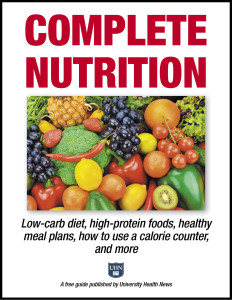Congestion: Nasal Pain and How to Clear It Up
While many people welcome the changing seasons, those with allergies see the beginning of spring and fall as the time when they have to load up on extra tissues, thanks to congestion. Nasal conditions, often caused by allergies, can be irritating, painful, annoying, and disruptive. However, by recognizing the source of your allergy, you can more easily find relief and perhaps even help control flare-ups.
The best way to prevent nasal allergy symptoms is to manage your allergies before your body has a chance to adversely respond to substances. One way is to begin medications before seasonal allergies attack. Another is to plan on staying indoors when pollen counts are high—and shower after being outside. Take care to keep your home free of pet dander from dogs and cats, mold, and dust.
Congestion: Nasal Irritation Causes and Risk Factors
Nasal allergies are an inflammatory reaction to certain environmental substances, such as dust mites, mold, animal hair or dander, grass, or pollens. Pollen is the most common cause of allergens, especially during the spring and fall when tree, flower, grass, and weed pollen are at their greatest density in the environment. (See this link for an interactive map showing pollen forecasts around the U.S.)
Allergies can happen to anyone, but your risk is higher if you have a family history of allergies. Environmental pollutants also play a role, such as smoke, chemicals, and perfumes.
Eat Right, Starting Now!
Download this expert FREE guide, Complete Nutrition: Low-carb diet, high-protein foods, healthy meal plans, how to use a calorie counter, and more.
Create healthy meal plans and discover the Superfoods that can transform your plate into a passport to better health.
Nasal Congestion Symptoms
Your body releases the natural chemical histamine when it encounters an allergen in order to defend the body. This reaction is what triggers many symptoms common to nasal congestion. Among them:
- Sneezing
- Runny/stuffy/itch nose
- Coughing
- Sore or scratchy throat
- Itchy and watery eyes
- Dark under-eye circles
- Headaches and/or facial pain
- Excessive fatigue
How to Diagnosis and Treat Congestion: Nasal Condition Remedies
A physical exam often will identify the source of your allergy. However, you may need other tests to help isolate the allergen and determine the best treatment and preventative options. The two most used are the skin prick and allergy blood tests.
- Skin prick. A doctor places a variety of substances onto your skin to see how your body reacts to each one. A small red bump appears if you are allergic to a substance.
- Blood test. Sometimes referred to as a radioallergosorbent test (RAST), a blood test measures the amount of immunoglobin E (IgE) antibodies to particular allergens that are present in your blood.
There are various ways to treat nasal congestion and allergies.
- Antihistamines: They prevent this condition by blocking histamine formation in the body. Some over-the-counter (OTC) versions work fine, but check with your doctor before. (See also our post “The Myth of Non-Drowsy Antihistamines and Allergy Medicine.”)
- Decongestants: OTC decongestants used over a short period of time can relieve stuffy nose and sinus pressure. Again, check with your doctor, especially if you have high blood pressure or an enlarged prostate.
- Eye drops and nasal sprays: They relieve itchiness and other symptoms related to allergies.
- Immunotherapy (allergy shots): You can use this approach in conjunction with medications to control your symptoms. These shots decrease your immune response to particular allergens over time.
Originally published in 2016 and regularly updated.
The post Congestion: Nasal Pain and How to Clear It Up appeared first on University Health News.
Read Original Article: Congestion: Nasal Pain and How to Clear It Up »
Powered by WPeMatico


